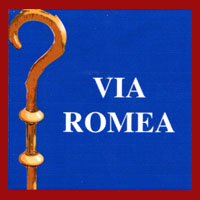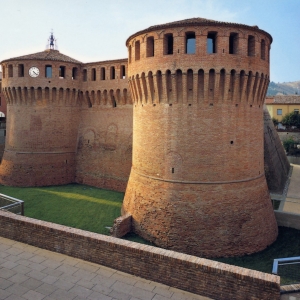 ROMEA GERMANICA WAY
ROMEA GERMANICA WAY
The Romea Germanica Way retraces the journey undertaken by Friar Albert of Stade in 1236 to Rome and meticulously written up in his travel diary.
2221 km / 260 km in Emilia-Romagna

The Romea Germanica Way retraces the journey undertaken by Friar Albert of Stade in 1236 to Rome and meticulously written up in his travel diary.
It was one of the “Peregrinationes Maiores” (most important places of pilgrimage) for the pilgrims of the period and one of the routes preferred by kings, Saxon emperors and Swabian sovereigns to maintain their contact with the city of the popes.
Today this ancient route of about 1022 km is a great European route of culture and religious significance which passes through several countries and touches on some of the major Italian cities which today still have an important role in history.
The Romea Germanica Way starts from Augsburg, the city where the schism of 1517 was drawn up, and passes through Trento, the city of the Counter-Reformation, and Padua, home to the Basilica of St. Anthony. It enters Emilia Romagna by crossing the Po Valley Plain passing through Ferrara and
from here, along several variants, it arrives at the Pomposa Abbey and Ravenna, the home of Byzantine religious locations and the magnificent Mausoleum of Theodoric.
At the foot of the Apennine range the Romea Germanica Way climbs toward Bagno di Romagna and the Serra pass, crossing the Casentinesi Forests National Park from where it drops again toward Tuscany on the way to Rome.
Intersections
The Romea Germanica Way joins St. Anthony’s Way, the Assisi Way and Dante’s Way.
The Romea Germanica Way is listed in the Atlas of Paths of the Mibact.
Before setting out, always consult the institutional websites of the individual Paths for up-to-date information.
TOUR OPERATORS
Piazza della Libertà 9C
Bertinoro (FC)
viale Emilia 30
Cervia 48015 (RA)
via delle Industrie 14
Ravenna 48121 (RA)
Via Borgo dei Leoni 11
Ferrara 44121 (FE)

events & experiences
Cycling in the footsteps of pilgrims along the Via Romea Germanica
Discovering the Jubilee Gates of the hinterland








